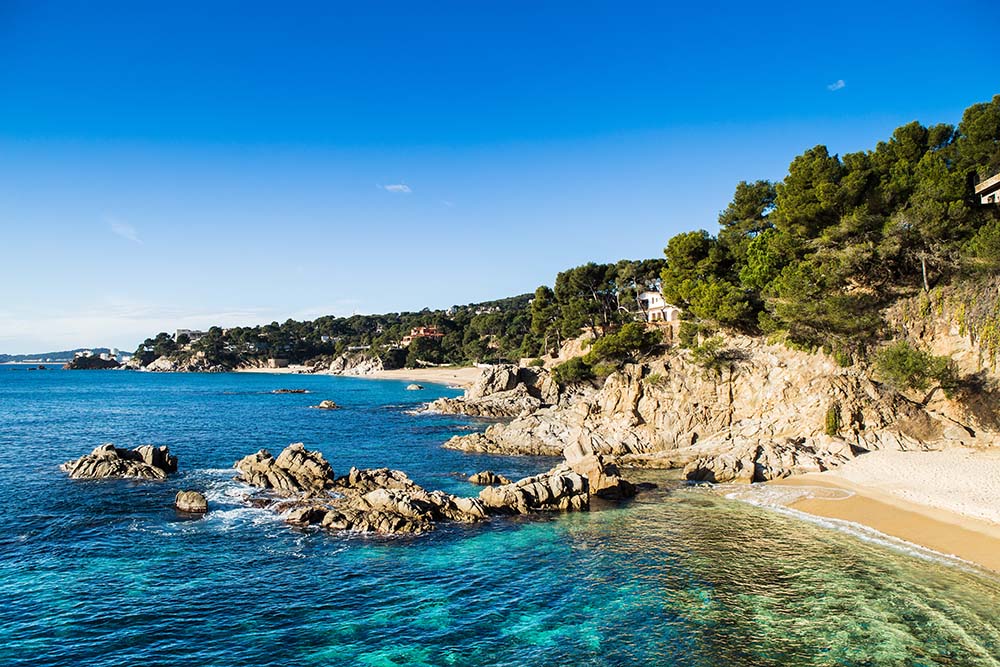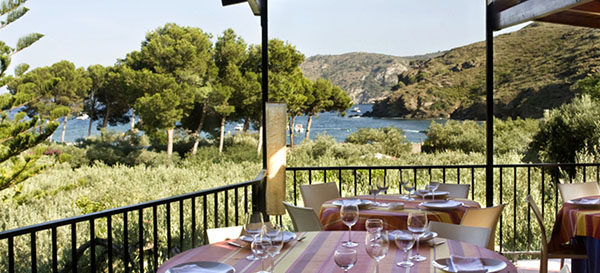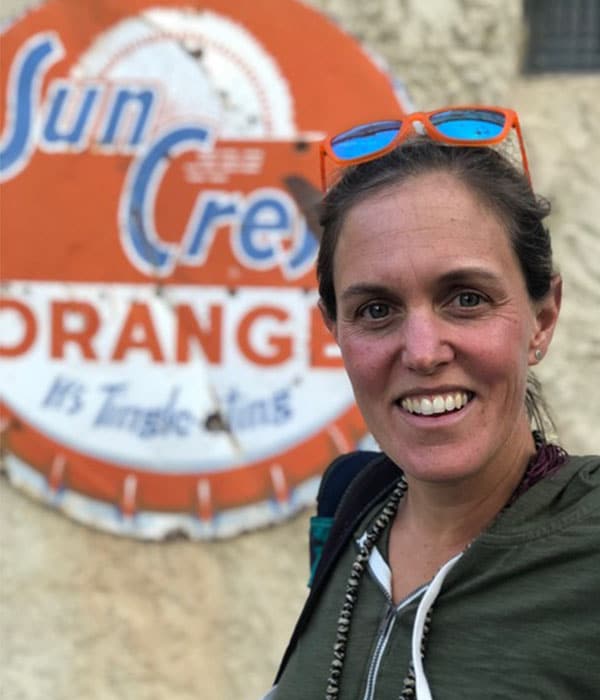
There’s a reason the surrealist painter Salvador Dali called the beautiful Costa Brava region home. Located in the foothills of the Pyrénées in the northeast corner of Spain, Costa Brava’s azure coastline, dotted with white-washed fishing villages and pine forests, is one of Spain’s best-kept secrets. It is at once a union of wilderness and culture, a merger of modern Catalan culture and its medieval roots. And when the light glitters on one of its many intimate coves, it is nothing less than pure magic.
“Wild Coast”
First coined Costa Brava, or “wild coast,” in 1908 by a Catalan journalist Ferran Agulló, the area stretches north from the Tordera river north of Barcelona to Banyuls-sur-Mer on the border to France. One of the top destinations in Spain, Costa Brava grew in popularity throughout the twentieth century. Costa Brava emerged as a retreat for the residents of Barcelona looking to escape the heat of the city. Also, the French, who popped across their southern border to experience something new.
With its turquoise marbled waters banked by golden migmatite cliffs, its heavenly Mediterranean climate, delicious seafood, and vibrant culture, Costa Brava has remained one of Spain’s favorite vacation escapes. Happily, though, the region is mostly untouched by major tour operators, making travel there feel both easy and fun. You can spend the day outside, hiking along the trails. End the day in a world-class restaurant serving garlic-butter prawns, paella, and a delicious Spanish rosé.
That is, indeed, the appeal of this area. There is a little something for everyone. In Calella, for instance, you’ll visit an 11th century castle built on the foundations of an ancient Roman Villa. And in Cadaques, the trip’s penultimate stop and consistently listed as one of Costa Brava’s best beach towns, there are both boutique shops and a well-marked kilometer-long swim. On the trip’s final hike, towards the Cap De Creus Lighthouse, you’ll visit Port Lligat. This is Dali’s eccentric home, built from linked fishing shacks and filled with everything from a stuffed polar bear to a lip-shaped couch and dotted with Dali’s signature eggs.
Catalan Culture and History
This pocket of shoreline has seen travelers since the Phoenicians first visited its banks in the 8th century B.C. The Greeks and the Romans, who introduced the Spanish to their cherished olives, also graced Costa Brava’s shores. However, it wasn’t until the 17th century that the region was conquered and incorporated into broader Spain, a historical event that still rattles current residents. This is evidenced both by the yellow and red striped Catalan flags flown proudly from the majority of shops and residences and by the resilience of Catalan, a romance language with both Arabic and Latin influences. Indeed, despite numerous attempts to ban it throughout the centuries, Catalan is still the preferred language among locals. Spanish is widely understood and spoken as well.
Costa Brava Food & Wine
 The unspoken rule of Spanish cuisine is this: take a few great ingredients and let them shine. A classic accompaniment to most meals, for instance, is tomato bread. It is as simple as it sounds: fresh tomatoes, garlic, olive oil and salt pressed into bread, often table-side. Wine invariably accompanies lunch and dinner, and is usually inexpensive, locally grown, and tasty.
The unspoken rule of Spanish cuisine is this: take a few great ingredients and let them shine. A classic accompaniment to most meals, for instance, is tomato bread. It is as simple as it sounds: fresh tomatoes, garlic, olive oil and salt pressed into bread, often table-side. Wine invariably accompanies lunch and dinner, and is usually inexpensive, locally grown, and tasty.
Olive Oil
This is the land of olive oil. Spain is the biggest producer of olive oil in the world. They produce 1.2 million tons of olive oil annually, enough to fill 400 Olympic-sized swimming pools.
Ham
The Spanish take their ham seriously. Ham-holders, which are exactly what they sound like, trays that stabilize your ham while you slice it, are as common as toasters in the U.S. Two important types to know about: Jamón serrano makes up 90% of the ham served and comes from white-hoofed pigs while the prized (and expensive but worth a taste) jamón ibérico comes from the black-hoofed pigs who have dined on acorns for the bulk of their short, sweet lives.
Spanish Tapas
You’ll be missing out if you overlook this seemingly chaotic but actually quite fun mainstay of Spanish bar culture. Think of tapas-eating as a chance to have a dinner- date with a handful of the most adventurous folks you’ve ever encountered. Rather than being locked into tasting only 2 or 3 dishes, by the end of the evening you’ll have tasted a dozen or so small plates. As you travel from bar to bar, be sure to ask what the specialty of the house is. Don’t be afraid to point at dishes that appeal to you (the Spanish do this all the time).
Spanish Paella
You’ll have to be a bit discerning when you order this icon of Spanish cuisine, as some restaurants will cut corners, using yellow dye rather than saffron. For example, if they know they’re feeding tourists. Just like anywhere, look for the locals before diving into this delicious baked rice concoction. Be aware that it’s usually served as a lunch rather than a dinner. In the Costa Brava region, it will likely feature fresh fish and prawns. This will be made from a seafood broth base.
Collectively, the landscape, culture, and food make Costa Brava one of the world’s best hiking destinations. On the trail, you’ll walk through a mixture of Mediterranean scrub and pine-oak forests all within sight of the sea. Off the trail, you’ll have the chance to walk, bike, or scooter through charming towns and cities.
Traveling and hiking Spain’s Costa Brava with Ryder-Walker is indeed the perfect mash-up of food and culture, outdoor adventure and city exploration.









Comments are closed.